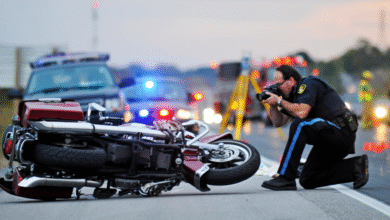Navigating Your Homeowner’s Insurance: What’s Covered and What’s an Out-of-Pocket Expense?

Have you ever heard the saying your home is your castle? Your home is a place of refuge from daily life—your sanctuary where you can rest and relax. This is also the one place in the world where no one cares if you spend the day in your pajamas if you want to.
You want to protect your home and this means having insurance. However, figuring out what’s covered under your policy can be confusing. So, here are some key tips for navigating homeowners insurance coverage. When you know what’s covered, it’s easy to know if you need to make any changes to your existing policy.
What Homeowner’s Insurance Typically Covers
There’s more than one type of homeowner’s insurance policy. You can choose to go with basic coverage, it’s the least expensive, or a higher-priced policy that pays out for damages caused by just about any scenario.
Did you know some homeowner’s insurance policies cover damages if a riot breaks out in your living room? While this type of coverage probably seems a little excessive, it’s always nice to know you have options.
So, if you’re not concerned about damage caused by a group of rioting individuals, what’s typically covered by a basic homeowner’s insurance policy?
Interior and Exterior Damage
Your homeowner’s insurance policy typically covers damage to the interior or exterior of your home. However, the cause of the damage can affect coverage. If your home is damaged by a fire, even one caused by a lightning strike, the repairs are usually covered.
The same applies to vandalism: if someone vandalizes your property, your policy should cover the repairs. This can include everything from replacing broken windows to removing graffiti. If your damage is beyond repair, your policy should cover reconstruction costs. Don’t forget about your policy’s deductible: your deductible will probably come into play when you file a damage claim.
Something to consider is insuring any free-standing structures on your property like a shed or carport. An attached garage is usually covered by your homeowner’s insurance since the building is connected to the home. Free-standing structures are different. Since they’re not part of the home, you typically need a separate policy to cover any damage to these types of structures.
You may consider the items in your home irreplaceable but they may be covered by your insurance. As part of the interior damage portion of your policy, items like furniture, clothing, electronics, and appliances are usually covered. Your policy may also cover other items like jewelry and artwork.
To ensure your stuff is insured, take photos or videos and keep the images with your records—this way you have proof of the items’ condition before the damage occurred.
Personal Liability
Your homeowner’s policy also covers property damage or injuries visitors may sustain. For example, if a friend parks their vehicle in your driveway and a tree branch falls on the car, your policy typically takes care of repair costs. The same applies if a guest suffers an injury on your property. Chances are you’re covered even if your family dog bites someone on your property.
The key to using this type of coverage is the incident must occur on your property. The injured party doesn’t have to be an invited guest but it helps speed up the claim process. Your policy may not cover damages a trespasser sustains. However, policies can differ in their coverage terms. Some pay out regardless if the injured party is invited or sneaking onto your property.
Read more: Top Questions to Ask Before Hiring a Roofing Company in San Diego
What Homeowner’s Insurance Usually Doesn’t Cover
Even though it seems like a basic homeowner’s insurance policy covers pretty much all types of damage that can occur inside and outside of your home, you’re probably going to run into a few gaps.
If you live in an area prone to flooding, this type of damage usually isn’t covered. You’ll need to take out a flood insurance policy and it can be expensive. Unfortunately, flood insurance rates are going up as storm intensity increases. Earthquake damage is something else not covered by homeowner’s insurance.
A few other scenarios that require additional coverage include damage caused by nuclear weapons and radiation fallout. Since this probably isn’t a huge concern, you can probably skip this type of insurance coverage. However, if you live in an area known for sinkholes, you may want to add the protection to your existing policy. Your standard policy doesn’t cover damage caused by gradual or sudden sinkholes.
If you’re wondering where to start with your homeowner’s insurance, a standard policy is often the best option. From there, you can add coverage as needed while also keeping costs a little more affordable.




